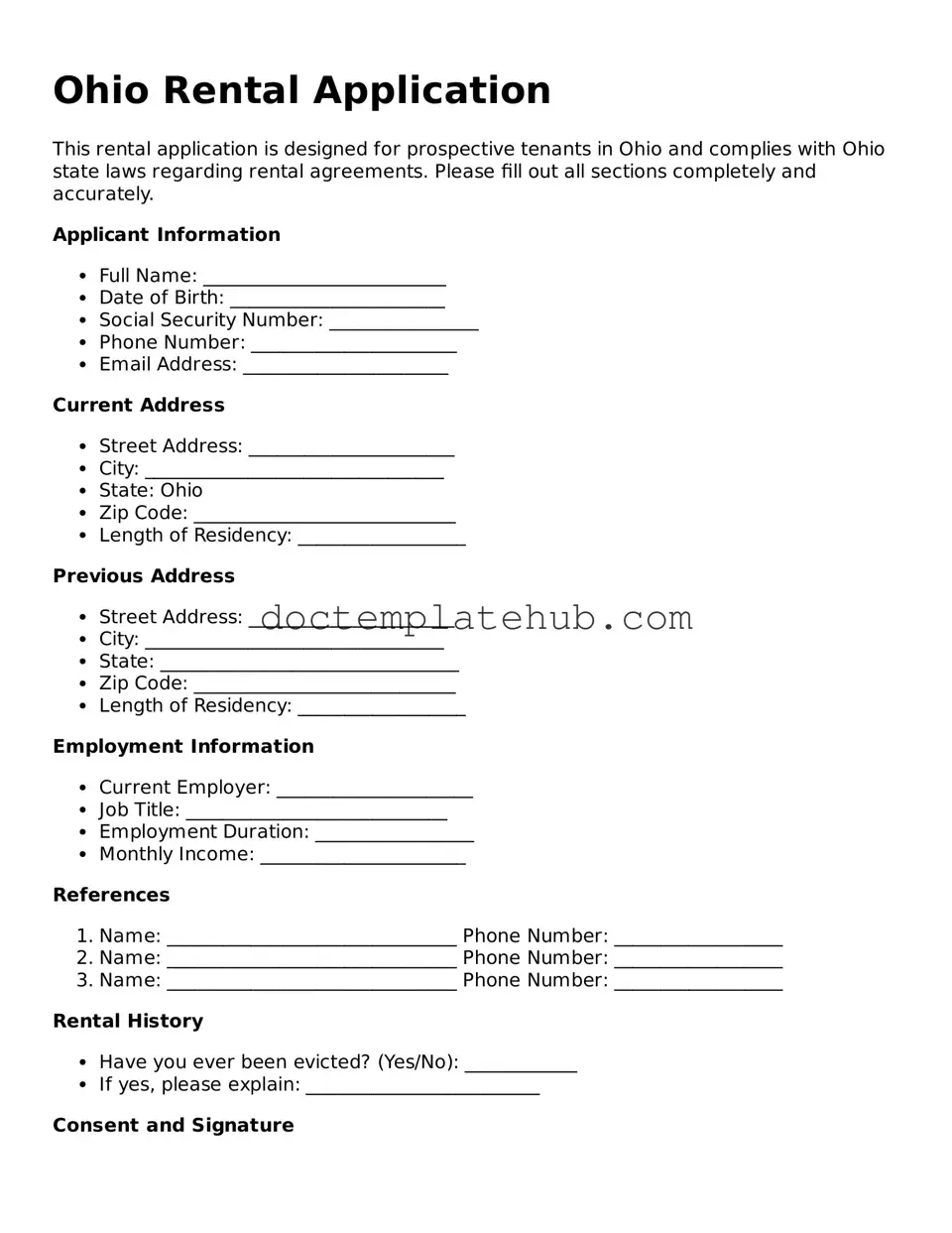What is the purpose of the Ohio Rental Application form?
The Ohio Rental Application form is designed to collect important information from prospective tenants. Landlords use this form to evaluate applicants based on their rental history, financial stability, and personal references. The goal is to ensure a suitable match between the tenant and the rental property.
What information is typically required on the application?
Applicants are usually asked to provide personal details such as their full name, contact information, and Social Security number. Additionally, the form may require information about employment history, income, current and previous addresses, and references. Some landlords may also request consent for a background check.
Is there a fee associated with submitting a rental application?
Yes, many landlords charge an application fee. This fee helps cover the costs of processing the application, including background checks and credit reports. It is important to inquire about the fee amount before submitting your application, as it can vary by property owner.
How long does it take for a landlord to process an application?
The processing time can vary widely. Typically, landlords may take anywhere from a few days to a week to review applications. Factors influencing this timeline include the number of applications received, the thoroughness of background checks, and the landlord’s availability. It is advisable to ask the landlord about their expected timeline during your application process.
What happens if my application is denied?
If your application is denied, the landlord is generally required to provide you with a reason. Common reasons for denial include insufficient income, poor rental history, or negative credit reports. You have the right to request a copy of the report used in the decision-making process, which can help you understand the basis for the denial.
Can I appeal a denial of my rental application?
While there is no formal process for appealing a denial, you can communicate with the landlord to discuss the reasons for the decision. If you believe there has been a mistake or if circumstances have changed, it may be possible to provide additional information or documentation that could support your case.
Are there any protections against discrimination in rental applications?
Yes, federal and state laws protect against discrimination in housing. Landlords cannot refuse to rent based on race, color, national origin, religion, sex, familial status, or disability. If you suspect that you have been discriminated against during the application process, you may want to seek legal advice or file a complaint with the appropriate authorities.
What should I do if I have a criminal record?
Having a criminal record may impact your rental application. However, it is important to be honest when disclosing this information. Some landlords may be willing to consider your application based on the nature of the offense, how much time has passed, and evidence of rehabilitation. It may be beneficial to provide context or references that can vouch for your character.
Can I withdraw my application after submitting it?
Yes, you can withdraw your application at any time before the lease is signed. It is courteous to inform the landlord of your decision, especially if you have already paid an application fee. Be sure to check the terms regarding the fee, as it may or may not be refundable depending on the landlord's policies.
What should I do if I have questions about the application process?
If you have questions, it is best to reach out directly to the landlord or property management company. They can provide clarification on the application process, required documentation, and any specific criteria they may have. Open communication can help ensure that you understand all aspects of the application and increase your chances of a successful rental experience.
